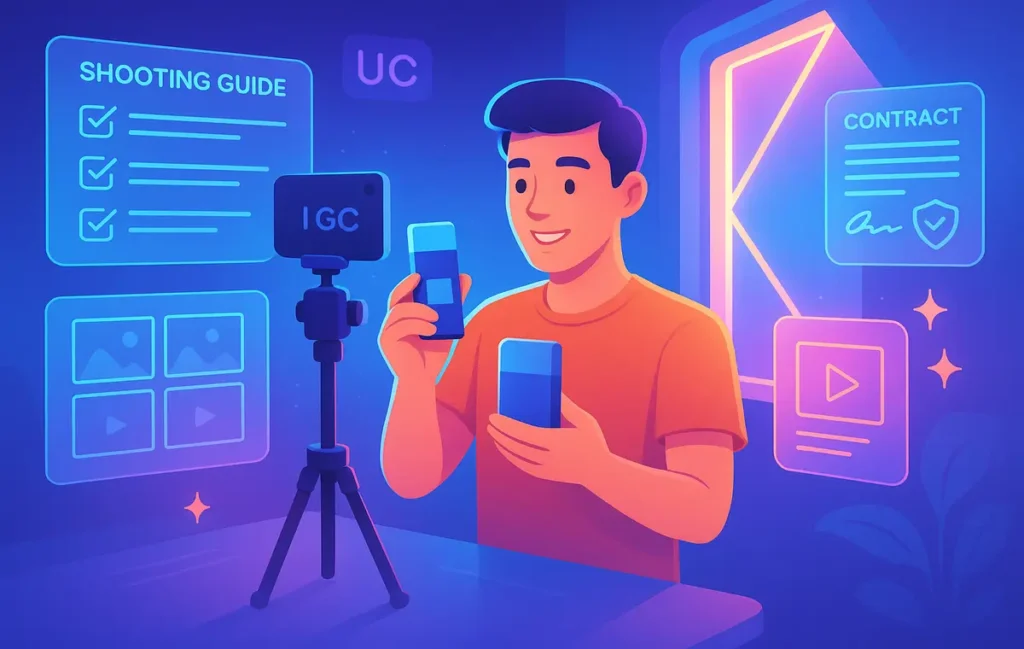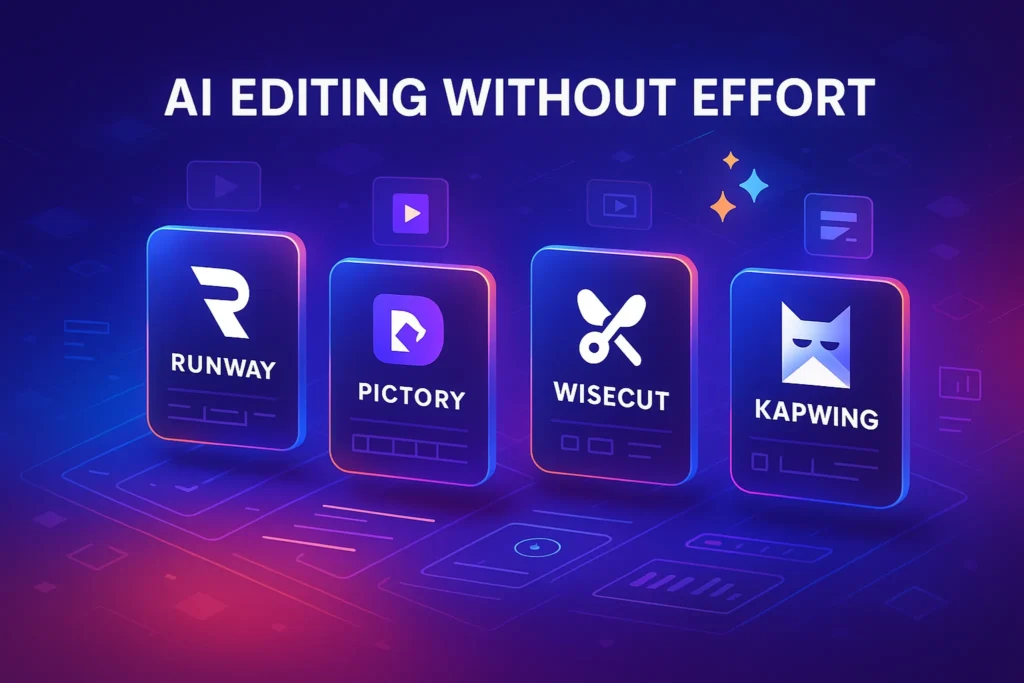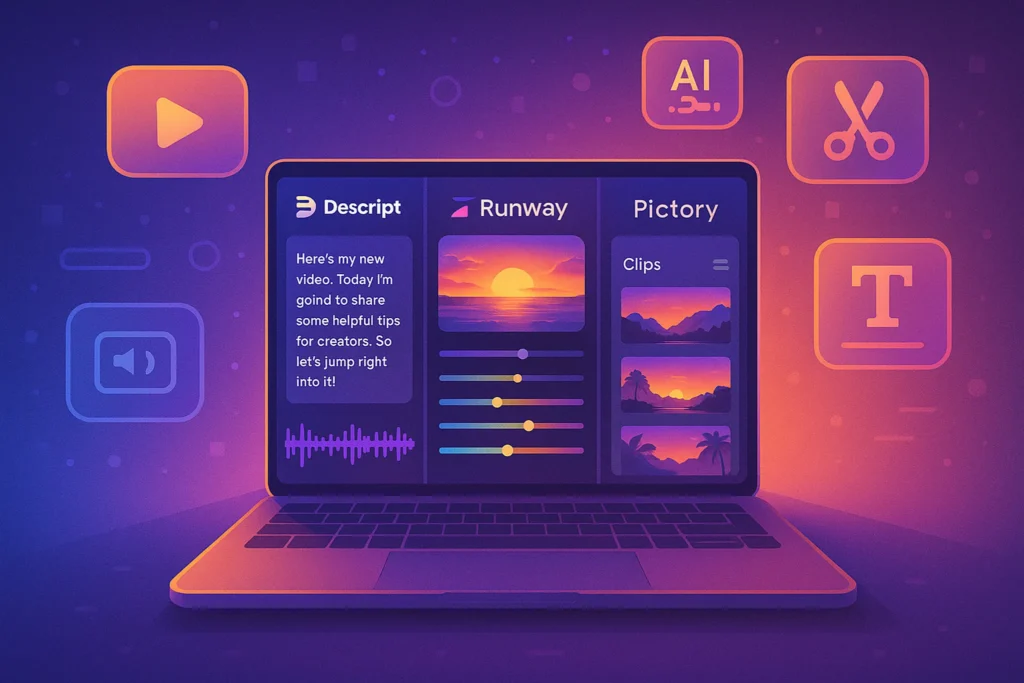🎯 Intro
UGC ads have become the secret weapon of modern digital marketing. They deliver four times the engagement of traditional ads—but only if they’re built the right way. Unlike polished TV commercials, user-generated ads thrive on authenticity. Yet authenticity doesn’t mean chaos. It needs clear briefs, simple shooting guidelines, and airtight legal protections.
For marketers navigating this new space, UGC ads aren’t just about outsourcing creativity. They’re about creating frameworks where everyday people—your customers, micro-influencers, or hired UGC creators—can tell brand stories with credibility. On NerdChips, we’ve explored The Power of UGC and how brands leverage authenticity in campaigns. Now let’s dive deeper into the tactical side: how to brief, how to shoot, and how to protect your brand legally.
💡 Nerd Tip: Think of UGC ads as co-creation. The more structure you provide, the more freedom creators have to shine without going off-brand.
🔍 Why UGC Ads Work
Consumers have grown weary of glossy, corporate messaging. Studies consistently show that people trust content made by other people more than content made by brands. According to Nielsen, 92% of consumers trust recommendations from individuals—even if they don’t know them—over branded content.
This trust directly translates to higher engagement. TikTok reports that UGC ads often outperform studio-produced ads on CTR by 25–40%. For e-commerce and DTC brands, the ROI gap is even larger: production costs are lower, yet the conversion lift is higher.
Another reason they work? They blend seamlessly into social feeds. A polished 30-second spot screams “ad.” A casual video of a real user explaining why a product fits their lifestyle feels native, and that frictionless experience drives more people to stop scrolling.
💡 Nerd Tip: If your ads are getting skipped, test a UGC version. Even the same script can feel more believable in the hands of a real person.
📝 Crafting the Perfect UGC Ad Brief
The heart of a successful UGC campaign is the brief. Many brands fail because they either over-control or under-direct. A great UGC brief is not a script—it’s a guide.
Start with the campaign objective. Are you looking to build awareness, drive conversions, or re-engage existing customers? Awareness briefs allow more storytelling freedom, while conversion-focused briefs need clearer calls to action.
Next, define tone and brand message. Your UGC creators must understand how to talk about your product in a way that feels authentic but consistent. For example, if you’re marketing a productivity app, you don’t want creators focusing only on its entertainment features.
Storytelling guidance is essential. Instead of dictating lines, outline the story arc: the problem, the personal experience, the solution, and the result. Creators should use their own words, but within this framework.
Don’t forget examples. Show clips of previous successful UGC ads or campaigns. When creators see what worked before, they know how to balance authenticity with structure.
💡 Nerd Tip: A one-page brief is ideal. If your instructions run longer than a page, you risk killing the spontaneity that makes UGC powerful.
🎥 Shooting Guides for UGC Creators
The shooting process makes or breaks UGC content. While brands shouldn’t dictate every frame, providing shooting guidelines ensures content looks usable across platforms.
Lighting is critical. Encourage creators to film in natural light near windows or use affordable ring lights. Poorly lit footage undermines trust, no matter how authentic the delivery.
Framing and composition matter too. Suggest that creators shoot vertically for TikTok and Reels, but horizontally if you plan to repurpose content on YouTube or connected TV. Simple tips—like avoiding cluttered backgrounds or maintaining headroom—improve quality dramatically.
Mobile-first is the default. Most UGC will be filmed on smartphones. Advise creators to clean their lenses, film in 1080p or 4K, and keep steady hands or use a simple tripod.
Finally, address delivery. Over-polished reads kill authenticity, but unprepared rambling doesn’t help either. Encourage creators to rehearse key points while staying natural. Think “friend explaining a product,” not “actor performing a script.”
💡 Nerd Tip: Provide creators with a quick visual checklist: light source, camera orientation, and audio clarity. They can run through it in under 30 seconds before hitting record.
⚖️ Legal & Compliance Aspects
Legal frameworks are where many UGC campaigns stumble. Without contracts and clear rights, brands risk disputes or even lawsuits.
The first issue is usage rights. Always specify whether you’re buying out full rights to the video or licensing it for limited use. A buyout grants long-term flexibility but costs more; a license may be cheaper but comes with restrictions.
Disclosure is mandatory. In markets like the US and EU, any sponsored content must be labeled as such. Creators should use hashtags like #ad or #sponsored. Failure to disclose can result in fines for both creators and brands.
Data protection laws like GDPR and CCPA also come into play if user data is collected. For instance, if you’re running contests that require email sign-ups, you must handle that data within compliance standards.
Finally, contracts with creators should be simple but firm. Spell out deliverables, deadlines, usage rights, and payment terms. Templates are fine, but review them with a legal advisor if scaling campaigns.
💡 Nerd Tip: Draft a two-page contract template. Anything longer overwhelms creators; anything shorter leaves your brand exposed.
📈 Real ROI Examples
The ROI of UGC ads isn’t theoretical. DTC brands like skincare startups and supplement companies have reported cutting production costs by 70% while tripling engagement rates when switching from agency-produced ads to UGC campaigns.
For example, a fitness brand tested a $10,000 studio ad against a $1,500 UGC campaign on TikTok. The studio ad generated a 1.2% CTR. The UGC ad? 4.8%. That’s a 4x improvement in engagement with one-sixth of the budget.
Another e-commerce store saw their cost-per-acquisition drop from $28 to $12 after integrating UGC content into their paid social strategy.
💡 Nerd Tip: When pitching UGC ads internally, don’t just emphasize authenticity—show the math. Executives buy into numbers more than narratives.
🚀 Implementation Guide
The best UGC ad campaigns follow a repeatable process.
Step one is platform selection. Decide if your priority is TikTok virality, Instagram Reels engagement, or YouTube Shorts discoverability. Each platform rewards slightly different formats.
Next, craft the brief. Keep it short, structured, and focused on outcomes. From there, identify and partner with UGC creators. These can be micro-influencers, paid creators on platforms like Billo or Insense, or even enthusiastic customers.
Once the content is shot, don’t settle for one version. Test multiple variations with different hooks and CTAs. UGC thrives on experimentation, and algorithms reward diversity.
Finally, scale the winners. Once you find the combination of creative, platform, and message that performs, put ad dollars behind it. Tools like AI video editors—see our Best AI Video Editing Tools Reviewed—help you scale quickly by trimming and repurposing winning content.
💡 Nerd Tip: Repurpose UGC across platforms. A 15-second TikTok can become an Instagram Reel, a YouTube Short, and even a paid ad on display networks.
⚡ Launch Your UGC Campaign Smarter
Collaborate with platforms like Billo, Insense, and Trend.io to find vetted UGC creators. Get your first campaign live in days, not months.
📊 UGC Ads vs Studio Ads vs Influencer Ads
When planning campaigns, brands often face a critical choice: should they invest in UGC ads, high-production studio ads, or influencer-driven content? Each has unique strengths and weaknesses, and understanding these differences helps allocate budget more effectively.
Studio ads are the most polished. They involve professional crews, lighting setups, and carefully scripted delivery. This gives brands complete control over messaging, but costs can easily run into tens of thousands of dollars. The downside is that audiences often skip them because they feel like “ads.”
Influencer ads leverage reach. By working with influencers who already have an audience, you gain built-in distribution and trust. However, influencer fees can climb steeply, and the audience may know the ad is transactional, making it feel less authentic.
UGC ads, by contrast, combine low cost with high authenticity. They are faster to produce, don’t require expensive sets, and usually outperform traditional ads in engagement metrics. The trade-off is less polish and the need to manage many small creators instead of one big influencer.
💡 Nerd Tip: Don’t think of these as mutually exclusive. Many successful brands run all three types in parallel: polished ads for brand image, influencer ads for reach, and UGC ads for authentic conversions.
📈 Analytics & Measurement for UGC Campaigns
A UGC ad is only as powerful as the results it drives. To truly understand its impact, marketers must track specific performance metrics.
Click-through rate (CTR) remains a core benchmark. UGC ads tend to deliver CTRs 30–50% higher than studio ads, but you need to measure them against your baseline. Cost per acquisition (CPA) is another critical metric; in many case studies, brands have cut their CPA in half by shifting budget to UGC.
Engagement rate (likes, shares, comments) signals how well your UGC blends into organic feeds. If your UGC feels too staged, engagement will drop. Finally, don’t overlook view-through conversions—sales that occur after someone sees a UGC ad but doesn’t click immediately.
AI-powered analytics platforms, like the 7 Emerging AI Marketing Tools You’ve Never Tried, now help track micro-metrics such as “average view duration” or “hook retention rate” (how many users watch past the first three seconds). These insights let brands tweak briefs and creator selection in real time.
💡 Nerd Tip: Don’t just track cost-per-click. Track cost-per-hook (how much you spend to keep viewers watching beyond the first 3–5 seconds). It’s often a better predictor of long-term ROI.
🤖 The Role of AI in UGC Workflows
Artificial intelligence is reshaping UGC production and scaling. Where marketers once had to manually trim, caption, and test creatives, AI now accelerates every stage.
Editing tools like Best AI Video Editing Tools Reviewed can auto-generate multiple ad versions from a single creator submission, adding captions, resizing for different platforms, or even inserting dynamic CTAs. This saves hours of manual labor and makes testing more efficient.
AI agents, such as Adobe AI Agents for Marketing, can analyze which storytelling elements resonate most. For instance, an AI tool might identify that videos showing “unboxing moments” drive higher CTR than those showing “product usage” and recommend briefs accordingly.
💡 Nerd Tip: Use AI for iteration, not creation. Let humans film authentic UGC, but let AI multiply its reach by editing and optimizing at scale.
🧩 Case Study Snapshot: Skincare Brand
Consider a DTC skincare brand launching a new serum. Instead of spending $20,000 on a glossy commercial, they partnered with 10 UGC creators at $250 each, investing just $2,500. Each creator delivered two short videos, resulting in 20 unique assets.
The brand tested them across TikTok, Reels, and YouTube Shorts. Within two weeks, three ads emerged as winners, delivering a CTR of 5.2% compared to 1.4% on their studio-produced control ad. Cost-per-acquisition dropped from $32 to $13.
Because contracts were clear and usage rights secured, the brand repurposed the winning UGC ads across email campaigns and website landing pages. This extended the value far beyond social ads, making a small investment generate a six-figure revenue lift.
💡 Nerd Tip: Think of UGC content not as disposable ads but as reusable assets. With the right contracts, one clip can power ads, landing pages, and even product tutorials.
⚠️ Common Pitfalls & How to Avoid Them
While UGC ads are powerful, they come with traps that can undermine performance.
One mistake is over-engineering briefs. If you dictate every line, you strip away the authenticity that makes UGC work. Instead, focus on story arcs and let creators use their own words.
Another issue is neglecting usage rights. Too many brands assume ownership without written agreements, only to face takedown requests later. Always secure rights before publishing.
Brands also fail by polishing too much. Heavy editing can make UGC look like a studio ad, losing its edge. Keep edits minimal: trim, caption, and format, but don’t sterilize the delivery.
Finally, ignoring creator diversity can limit reach. Relying on one creator style makes campaigns stale. Working with a range of personas ensures variety and broad appeal.
💡 Nerd Tip: Audit your last campaign. Did you let creators’ personalities shine, or did your brand voice overwhelm the authenticity? The answer often explains performance gaps.
📬 Want More Smart Marketing Insights?
Subscribe for weekly deep dives into UGC, AI video tools, and future-ready strategies. Stay ahead of the curve with content that converts.
🔐 100% privacy. Only actionable tips from NerdChips.
🧠 Nerd Verdict
UGC ads represent the future of digital advertising. They combine authenticity with efficiency, delivering higher returns at lower costs. But their success hinges on structure. Brands that learn to craft clear briefs, equip creators with simple shooting guides, and protect themselves with transparent contracts will scale faster and safer.
At NerdChips, we believe UGC ads aren’t a passing trend. They’re a blueprint for a new kind of marketing—one where customers become collaborators, and ads feel like content worth watching.
❓ FAQ: Nerds Ask, We Answer
💬 Would You Bite?
Would you hand over your brand storytelling to real customers and creators for authenticity—or keep control in-house and risk sounding corporate?
Crafted by NerdChips for creators and marketers turning authenticity into conversions.



